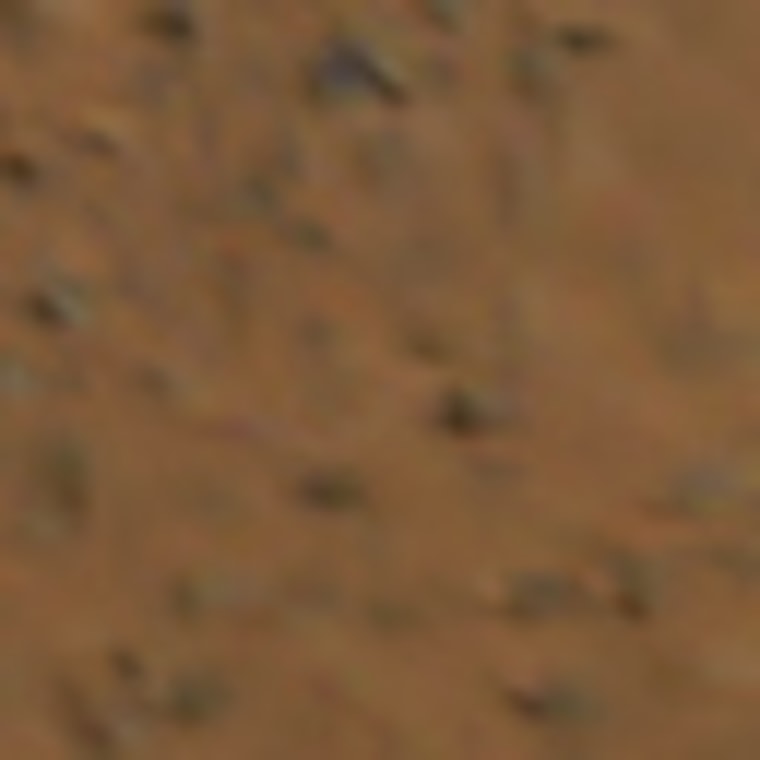NASA released a 3-D panoramic view of the Spirit rover's Mars landing site on Monday, and scientists picked out their most likely first target for exploration: a shallow crater freshly named "Sleepy Hollow."
The crater is a target of geological interest, and may even bear the marks left behind by the airbag-cushioned Spirit rover as it bounced to a stop in Gusev Crater on Saturday night, said Steve Squyres, the Cornell astronomer who leads the mission's science team.
"It's a window into the interior of Mars," Squyres told journalists at NASA's Jet Propulsion Laboratory in Pasadena, Calif.
Sleepy Hollow was the first feature around the rover to be named. Squyres said scientists came up with the name not primarily because it evoked Washington Irving's classic Halloween tale, but because they hadn't been getting much sleep since the successful landing.
Spirit won't be visiting Sleepy Hollow right away: Mission managers plan to take more than a week to get the rover ready for driving, and it may take a few days more for the rover to journey the estimated 40 to 50 feet (12 to 15 meters) to the 30-foot-wide (9-meter-wide) feature.

"By the time we get really experienced in driving our vehicle, that’s a day trip. ... Early on, though, we haven’t got our Martian drivers license yet," Squyres joked. "If it takes a week to get to Sleepy Hollow, that’s fine with me."
Just the day before, Squyres said some scientists were worried that the rover might sink into dust within Sleepy Hollow, turning the "tantalizing" destination into a "rover trap." On Monday, he said the science team would use imagery and geological analysis to make sure the area was safe, then dip the rover's toe into the crater.
He cautioned, however, that if more interesting scientific targets presented themselves over the next few days, Sleepy Hollow would have to wait.
Checking the systems
Meanwhile, engineers are checking out the rover's systems and have found that the scientific instruments are in good working order. That included the German-built Mossbauer spectrometer, which apparently suffered some vibration-related stress during launch, Squyres said. That news was greeted by the Mossbauer team with the same glee seen at JPL on Saturday night — "only in German," Squyres said.
However, engineers were looking into what could be a glitch with one of the motors that aimed the rover's high-gain antenna for direct communications with Earth, said Matt Wallace, one of the mission managers.
"In one of the two directions on the elevation motor, the current required to drive the mechanism was spiking in a noisy fashion," Wallace said. "Based on some of the tests that we've done here on Earth, we're going to spend a little time trying to understand that signature a little better."
That meant color imagery from the rover's high-resolution panoramic camera, or Pancam, could not be sent to Earth as quickly as some had hoped. Instead, NASA released a 3-D version of a black-and-white panorama of the landing site, color-coded for viewing with red-blue glasses. Amateurs had already created 3-D Mars views using low-resolution pictures from the rover's hazard avoidance cameras, but this was the first 3-D panoramic picture. The 3-D effect could be seen using cardboard-and-cellophane glasses commonly available at novelty stores.

Squyres said the high-resolution color panorama was stored in the rover's memory and would be sent to Earth via a Mars satellite relay, most likely by 12:30 a.m. PT Tuesday (3:30 a.m. ET). As a foretaste, NASA released a thumbnail version of one of the color pictures that would make up the panoramic mosaic.
Wallace said closer examination of previous black-and-white pictures taken around the landing platform confirmed that what initially appeared to be a large rock standing in the rover's path was actually a partially inflated airbag from the craft's landing.
"Those puffed-up areas are in fact airbags," he said. But engineers were taking a second look to make sure there were no rocks underneath the airbags that might pose a hazard, he said.
Looking for water and life
The Spirit rover's Saturday night landing came after a 300-million-mile, seven-month journey. Over the next three months at least, scientists plan to use the Spirit rover and its onboard cameras and instruments to look for geologic evidence of past water activity in the rocks and soil. If water once filled Gusev Crater, it may have been a place suitable for life.
Spirit's twin, Opportunity, is due to touch down in another region of Mars, Meridiani Planum, on Jan. 24. It will study the region's hematite deposits, looking for further clues as to ancient Mars' geology. The key question for the $820 million, "two-for-one" missions is whether water persisted on the planet long enough to allow the potential development of life.
The Mars Exploration Rover mission is part of a scientific campaign that will stretch for more than a decade, aimed at seeking traces of life on Mars. Water is a key element of that search, since on Earth, life is found virtually everywhere there is liquid water. Past missions have led scientists to believe that, billions of years ago, Mars was much warmer and wetter than it is today.